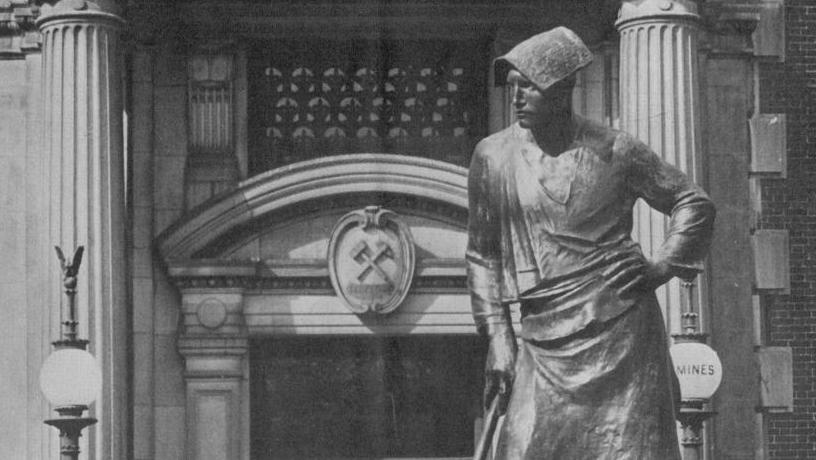History
Columbia Engineering's Earth and Environmental Engineering Department descends from Columbia School of Mines, an institution predating Columbia's Engineering School.

The School of Mines of Columbia University, founded in 1864 by Professor Thomas Egleston, Jr. with only three professors, was the first mining and metallurgy school in the U.S. It became the foundation of Columbia's School of Engineering and Applied Science and later the home of the Department of Mining, Metallurgical, and Mineral Engineering. However, the title "School of Mines" was retained by Columbia University, honoris causa. You can see the bronze statue of The Metallurgist (Le Marteleur) in front of Columbia’s Seely W. Mudd Hall, named after an alumnus of the School of Mines.
Nearly one century after its formation, in 1959, the School of Mines was renamed the Henry Krumb School of Mines (HKSM) in honor of the generous alumnus of the School of Mines and his wife, Ms. Lavon D. Krumb. HKSM has been a leader in mining and metallurgy research and education, including the first mining handbook by Professor Peele, the first mineral processing handbook by Professor Taggart, and other pioneering work in mineral beneficiation, chemical thermodynamics, kinetics, and transport phenomena in mineral extraction and processing.
The engineers trained at Columbia's School of Mines during the 19th and 20th centuries contributed much in developing the technologies that provided the basic material needs of society. In the late 1990s, the traditional programs in mining and mineral engineering of HKSM were transformed to include environmental concerns for land and water resources. This was an integral part of the framework for the creation of a university-wide major initiative in Earth studies, the Columbia Earth Institute.
The M.S. program in Earth Resources Engineering was instituted in 1996 to replace the traditional programs in mining and mineral engineering/extractive metallurgy. The B.S. program in Earth and Environmental Engineering was initiated in the fall of 1998 also to replace the traditional programs and is now accredited by the Engineering Accreditation Commission of ABET. As a result, the traditional educational and research programs of the Henry Krumb School of Mines have been expanded to address the major environmental concerns of the 21st century.
